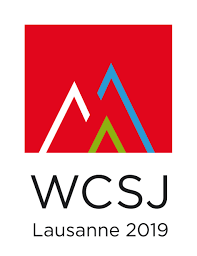How does Aussie science reporting rate?
Lisa Bailey, ASC President
The quality of Aussie science reporting? Average, if you ask a bunch of journalists who cover science, researchers themselves and science communicators.
A recent paper by Merryn McKinnon, Bronte Black, Sophie Bobillier, Kirsten Hood and Madeleine Parker from CPAS examined the perceptions of science media coverage by the stakeholders of science journalism in Australia. Overall the study, which interviewed 43 participants, found that the quality of Australian science reporting is average, “with any perceived lack of quality attributed to the changing landscape of the media with recent cutbacks and declining numbers of specialised science journalists.”
Encouragingly, the scientists in this study no longer felt any stigma from being involved in publicly communicating their work through engagement with the media. Things have certainly changed in the last 15 years, with scientists stating that they saw a need for them to be engaged with the public. Researchers also had a positive view of science communicators, seeing value in their role in facilitating interactions with the media.
The use of Press Releases was one of the most common ways for science communicators to gain media attention, with most using a mixture of approaches including personal connections or providing reporters with rich media packages including video and images. The extent to which press releases are used, in some cases almost verbatim, contrasted between journalists who work for online or syndicated media outlets and those who freelance. Freelancers were less likely to say that their use of press releases had recently changed, however online journalists said they now use press releases more than they did five years ago ‘because online the currency is eyeballs, so you have to produce a lot of fresh content every day, so you’re relying on those press releases’.
Given this reliance on press releases as, at minimum a starting point, and in some cases, most of the actual news story itself, a system for ensuring that press releases are free from hype and easy to interpret would be a great help for both journos and readers. Famously a 2016 study found that the main source of hype stemmed from the press releases themselves. The UK Science Media centre last year started trialling a Press Release labelling system for new research – originally designed for health and medical reporting, the three categories would indicate:
- Is the research peer reviewed or not peer reviewed?
- What type of evidence is used to support claims? (eg Randomised control trial, observational study)
- What was the subject of the study? (eg humans, animals, cells)
The system in the UK is currently voluntary, but has been taken up by at least 5 charities and 20 universities since June 2018. It’s also being used by at least 5 major journal publishers including The Lancet, BMJ, Cell Press and PLOS.
The Australian Science Media Centre wants to bring this labelling system to Australia to integrate it as part of their SciMex platform for journalists. Ideally the labelling would be consistent with the already internationally recognised system, but this would require further training for Australian stakeholders.


